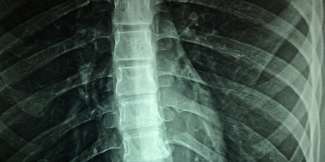All News

Tech Xplore / New algorithm enables wireless communications without perceptible delays in industrial environments
A team of researchers from Universidad Carlos III de Madrid (UC3M) and Universidad Politécnica de Madrid (UPM) has developed an innovative algorithm for Wi‑Fi networks called "Ponte" that can provide communication in industrial ...

Medical Xpress / Brain on jazz: Musical improvisation moves beyond pure inspiration to dynamic reconfiguration
An international research team investigated the brains of 16 jazz pianists while they played a piece from memory, improvised based on the melody, and freely improvised based on the chord changes. The analysis of how different ...

Phys.org / New fossil study illuminates the evolutionary success of frogs
A new study led by UCC paleontologists discovered that frogs have conserved their ecology in the last 45 million years. The research is published in the journal iScience.

Phys.org / Gut bacteria rapidly adapt to digest starches in ultra-processed foods, study finds
Gut bacteria evolve rapidly in response to different diets, UCLA evolutionary biologists report in a new study. The researchers found that gene variants that help microbes digest starches found in ultra-processed foods have ...

Phys.org / LLMs unleash AI's potential for autonomous and explainable materials discovery
Discovering new inorganic materials is central to advancing technologies in catalysis, energy storage, semiconductors, and more. But finding a material with just the right properties is extremely difficult. What if an AI ...

Tech Xplore / AI system protects wireless networks from jamming attacks in real time
A research team at the University of Ottawa has developed an advanced artificial intelligence system designed to autonomously defend wireless networks from jamming attacks, operating much like a digital immune system. This ...

Phys.org / Metabolic analyses of animal fossils help scientists reconstruct million-year-old environments
For the first time, scientists have analyzed metabolism-related molecules from the fossilized bones of animals that lived 1.3 to 3 million years ago, revealing insights about both the animals and their environments.

Medical Xpress / Astrocytes found to aid spinal cord repair by signaling immune response
Cedars-Sinai investigators have discovered a healing mechanism that could one day be harnessed to help treat patients with spinal cord injuries, stroke, and neurological conditions such as multiple sclerosis. Their study, ...

Phys.org / Detailed cell map unlocks secrets of how reproductive organs form
New research has mapped the cell types that specialize to form reproductive organs in both sexes, identifying key genes and signals that drive this process. The findings offer important insights into conditions affecting ...

Medical Xpress / Liver cell reprogramming boosts T cell function in aging immune systems
As people age, their immune system function declines. T cell populations become smaller and can't react to pathogens as quickly, making people more susceptible to a variety of infections.

Phys.org / 3D analysis of wrist ligaments reveals locomotion clues in human ancestors
When studying how fossil hominids moved, researchers usually analyze the morphology of bones—which is crucial for understanding the evolution of bipedalism—focusing mainly on muscle insertion sites. However, the potential ...

Medical Xpress / Menopause symptoms may be frequent and have negative effects, according to female endurance athletes
A new study finds menopause symptoms to be very frequently reported by female endurance athletes, with many perceiving a negative effect on their training and performance. The findings are published in PLOS One by Heather ...